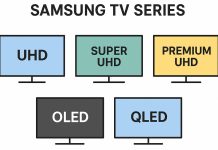Many TV manufacturers use various parameters to characterize the image quality on their screens. One of these parameters, developed by Vizio, is the “Effective Refresh Rate.” While the refresh rate typically refers to how often the frames on a TV screen are updated, Vizio introduced the Effective Refresh Rate as a virtual concept to represent the perceived smoothness of the image.
In Vizio’s specifications, this parameter is listed as 240Hz, 120Hz, or 60Hz, which should not be confused with the actual refresh rate of the TV. Essentially, the Effective Refresh Rate describes how the image appears to the viewer, simulating a frame rate of 240Hz even if the actual frame rate is lower.
Vizio’s Effective Refresh Rate Explained
- 240Hz Effective Refresh Rate: The TV has a matrix that supports 120 frames per second. It typically features a color depth of 10 bits and supports local dimming with 48-256 dimming zones. This provides a very smooth and high-quality viewing experience.
- 120Hz Effective Refresh Rate: In this case, the TV supports 60 frames per second, with a color depth of either 8 bits + FRC or 10 bits. It includes local dimming but with fewer dimming zones, usually ranging from 16 to 24 zones.
- 60Hz Effective Refresh Rate: This refers to the simplest display configurations, where the TV’s matrix supports 8 bits or 8 bits + FRC color depth, and it does not offer support for local dimming.
Understanding the Effective Refresh Rate
The Effective Refresh Rate is a virtual parameter, which, while useful for marketing, can be somewhat misleading. It is designed to indicate the perceived smoothness of the image based on the screen’s matrix type and does not correspond to the actual refresh rate or frame rate of the display. Therefore, it is essential to consider this figure in conjunction with other technical specifications, such as the actual frame rate and local dimming capabilities, to fully understand a TV’s image quality.







Thanks for sharing this thread with me on progressive Vizio TV page here?